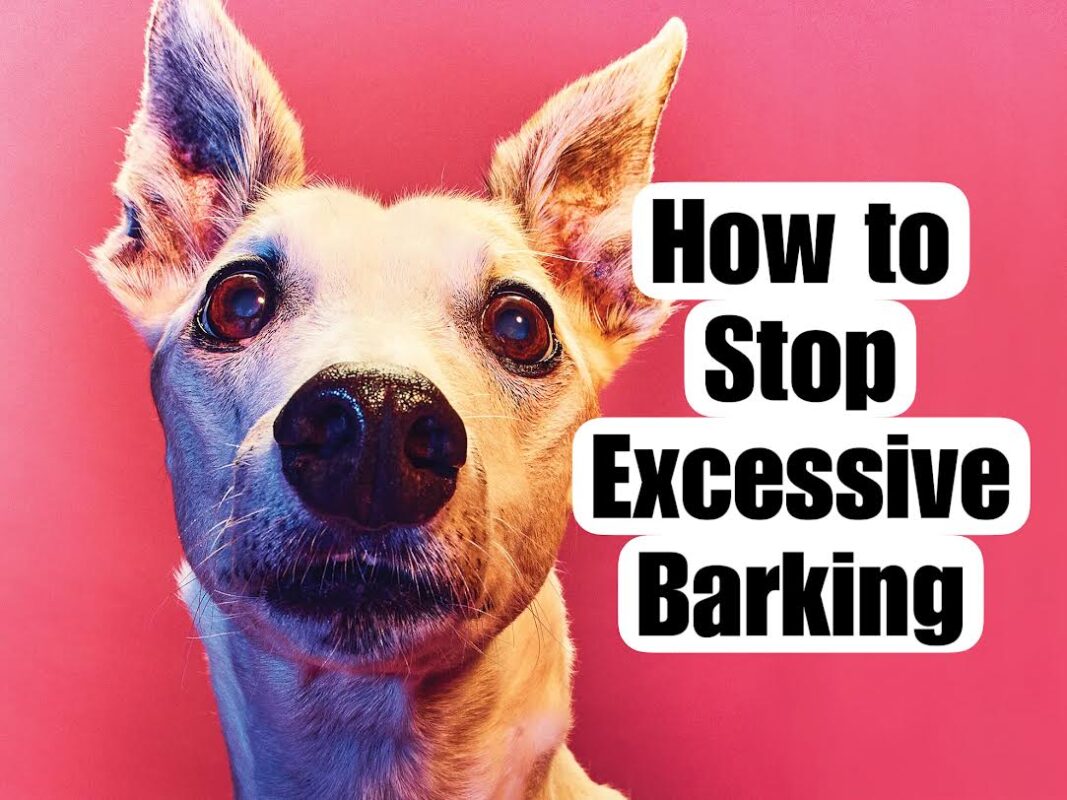Differential Reinforcement, Dog Behavior, dog training, Evidenced-Based Approaches, positive reinforcement, Problematic Barking
Comprehensive Guide to Manage Dog Barking: Evidence-Based Positive and Differential Reinforcement Techniques
Silence is Golden: Your Ultimate Guide to Managing Dog Barking Using Positive and Differential Reinforcement
By Will Bangura, M.S., CDBC, CBCC-KA, CPDT-KA, FFCP, (Dog Behaviorist), Certified Dog Behavior Consultant
Introduction
Why Addressing Barking is Important
Barking is a natural form of communication for dogs. However, excessive barking can become problematic and may indicate underlying behavioral issues, stress, or unmet needs. Addressing barking is essential for several reasons:
- Safety Implications: Excessive barking can disturb neighbors and may lead to formal complaints or legal issues.
- Stress Reduction: Constant barking can be stressful for both the dog and the pet guardian. Addressing this issue can lead to a more harmonious living environment.
- Societal Concerns: Many communities have noise ordinances that include dogs, so it’s important to be a responsible pet guardian within your community.
Reference: Overall, K. (2013). Manual of Clinical Behavioral Medicine for Dogs and Cats. Elsevier Health Sciences.
Identifying the Type of Barking
Understanding why a dog is barking is crucial for determining how to modify this behavior effectively. Here are the common types of barking you may encounter:
Territorial Barking
- Identifying Triggers: Observe the dog to see what stimulates the barking. It could be people passing by the window or someone ringing the doorbell.
- Setting the Baseline: Use a notepad or a mobile app to record how often the dog barks at these triggers over a set period, say, one week. This baseline information is crucial for measuring progress later.
Attention-seeking Barking
- Recognizing Cues from the Pet Parent: Sometimes, unintentional actions from the pet guardian may encourage this behavior. This can include looking at the dog, speaking to it, or even scolding it when it barks.
Fear-based Barking
- Recognizing Body Language: Dogs that bark out of fear usually exhibit other signs like a lowered body, pinned-back ears, and excessive salivation.
- Identifying Safe Spaces: Figure out where the dog feels most secure. This area can be used as a starting point for desensitization exercises later on.
Excitement Barking
- Occasions and Contexts: Make a note of when the dog tends to get excited and bark excessively. Is it during playtime, when you’re preparing for a walk, or when meeting new people?
Reference: Yin, S. (2009). How to Behave So Your Dog Behaves. TFH Publications Inc.
Basic Positive Reinforcement Techniques
Positive reinforcement is a method of training that focuses on rewarding the dog for good behavior, rather than punishing for undesirable actions. This creates a positive association with the desired behavior, making it more likely to be repeated in the future.
Marking Silence with a ‘Quiet’ Cue
- Choose a Marker: Use a specific word like “Quiet” or a clicker as a marker. This helps the dog understand exactly which behavior is being rewarded.
- Timing of Rewards: As soon as the dog stops barking, say “Quiet” or use the clicker and then immediately reward with a treat or toy. Timing is crucial; rewards must come within 1-2 seconds of the desired behavior to be effective.
- Consistency: Ensure that all pet guardians and family members use the same marker and rewards to maintain consistency.
- Type of Rewards: Opt for high-value treats initially to make a strong impression. Over time, you can vary the types of rewards to maintain interest.
Capturing Silence
- Set up Scenarios: Create a controlled environment where the dog is likely to bark. For instance, have someone ring the doorbell if territorial barking is the issue.
- Mark and Reward: As soon as the dog stops barking, use your marker (“Quiet” or a clicker) and give a reward.
- Gradual Increase: Start by rewarding any small break in barking. Gradually extend the length of silence required to earn a reward.
Implementing Clicker Training
- Charge the Clicker: Before using the clicker for training, spend some time ‘charging’ it. This means clicking the clicker and then immediately providing a treat, repeating this multiple times to create a positive association.
- Timing and Consistency: Just like with the “Quiet” cue, timing is essential. Click should coincide with the silence and be immediately followed by a reward.
- Positive Association: Over time, the dog will associate the sound of the clicker with a positive experience, reinforcing the desired behavior.
Reference: Pryor, K. (2009). Reaching the Animal Mind. Simon and Schuster.
Differential Reinforcement Techniques
Differential Reinforcement involves reinforcing a specific behavior while ignoring or not reinforcing others. This can be particularly effective for modifying barking behavior.
Differential Reinforcement of Incompatible Behavior (DRI)
- Identify an Incompatible Behavior: Choose a behavior that the dog cannot do while barking, such as sitting or lying down.
- Training Regimen: Use a cue like “Sit” and only reward the dog when it performs this behavior in the presence of the usual triggers for barking.
- Mark and Reward: Use your marker and give a reward as soon as the dog performs the incompatible behavior.
Differential Reinforcement of Other Behavior (DRO)
- Set Time Intervals: Initially, set short time intervals (e.g., 30 seconds to 1 minute) during which the dog must remain quiet to earn a reward.
- Reward Schedules: Use a variable reward schedule. Sometimes reward after shorter intervals and sometimes after longer ones, but always within the set range.
- Expand the Intervals: As the dog gets better at this, gradually extend the time intervals, ensuring that the behavior is reliable at each stage before moving on.
Reference: Taraldsen, G., & Tønnessen, F. E. (2020). Differential reinforcement in dog training. Veterinary Sciences, 7(1), 38.
Implementing Desensitization
Desensitization is the process of gradually exposing the dog to the stimuli that trigger its barking in a controlled manner, thereby reducing the dog’s sensitivity over time.
Identifying Triggers
- Auditory or Visual Stimuli: Clearly define what triggers the dog—be it the sound of a doorbell, passing cars, or other animals.
- Intensity Levels: Determine the level of the stimuli that the dog can tolerate without reacting. This sets the starting point for desensitization.
Structured Exposure
- Gradual Exposure: Begin by exposing the dog to a diluted form of the trigger. For example, if the dog barks at the doorbell, start by playing a recording of the doorbell at a low volume.
- Rewarding Silence or Calmness: Use your marker (“Quiet” or a clicker) to mark periods of calmness or silence, and immediately reward the dog. The aim is to create a positive association with the stimuli.
- Increase Intensity: Gradually increase the intensity of the stimuli as the dog becomes more comfortable. This could mean increasing the volume of the doorbell sound, for instance.
Advanced Strategies
These methods offer more complex training options and are generally suited for dogs that have mastered basic training concepts. They can be particularly useful for stubborn cases of problematic barking.
‘Speak-Quiet’ Training Sequence
- Teaching ‘Speak’ First: Oddly enough, teaching a dog to bark on command can make it easier to teach the ‘Quiet’ command. Use a trigger like a knock on the door to prompt barking, then mark it with the word ‘Speak’ and a reward.
- Transitioning to ‘Quiet’: Once the ‘Speak’ command is understood, you can introduce ‘Quiet’. When the dog barks upon hearing ‘Speak’, follow it with ‘Quiet’ and wait. As soon as the dog falls silent, mark this with your marker and provide a reward.
The ‘Look at That’ Technique
- Training the Dog to Look at the Trigger: Use a cue like “Look” and point to the trigger. Reward the dog when it looks at the pointed object.
- Rewarding the Return of Attention: After the dog has looked at the trigger, call its name and when it looks back at you, provide a reward.
- Creating a Positive Cycle: The aim is to make the dog associate the trigger with a positive experience, thereby reducing its impulse to bark.
Reference: Leslie, M. (2008). Control Unleashed. Clean Run Productions LLC.
Troubleshooting
While implementing these strategies, you may encounter challenges. This section provides actionable solutions.
What to Do When Progress is Slow
- Possible Reasons: Assess the dog’s overall health, level of exercise, and any changes in the environment that could be affecting its behavior.
- Tweaking Reward Types and Schedules: If progress stalls, consider changing the type of rewards or altering the frequency to reignite interest in the training process.
How to Tackle Setbacks
- Re-establishing Training Fundamentals: If the dog seems to regress, it might be necessary to go back to foundational training steps and gradually work back up.
- Assessing Environmental or Health Changes: Always consider any changes in the dog’s life that could contribute to setbacks, such as a move, a new addition to the family, or health issues. Consulting a veterinarian could be a useful step here.
Conclusion
Successfully managing a dog’s barking behavior is a nuanced process that requires a thorough understanding of the underlying causes and triggers. This guide has detailed multiple evidence-based techniques grounded in Positive Reinforcement and Differential Reinforcement to address various types of barking. By implementing these practices consistently and diligently, pet guardians can expect to see significant improvements in their dog’s behavior over time.
Key Takeaways
- Identify the Type of Barking: Understanding why a dog is barking sets the stage for an effective intervention.
- Positive Reinforcement: This includes marking and rewarding silence or calm behavior, using either verbal cues or a clicker.
- Differential Reinforcement: Techniques such as DRI (Differential Reinforcement of Incompatible Behavior) and DRO (Differential Reinforcement of Other Behavior) help in refining the training approach.
- Desensitization and Advanced Techniques: For stubborn cases, desensitization and advanced strategies like ‘Speak-Quiet’ Training Sequence and the ‘Look at That’ Technique can be employed.
- Troubleshooting: Always be ready to adapt and modify your approach if you encounter challenges or setbacks in the training process.
References
- Overall, K. (2013). Manual of Clinical Behavioral Medicine for Dogs and Cats. Elsevier Health Sciences.
- Yin, S. (2009). How to Behave So Your Dog Behaves. TFH Publications Inc.
- Pryor, K. (2009). Reaching the Animal Mind. Simon and Schuster.
- Taraldsen, G., & Tønnessen, F. E. (2020). Differential reinforcement in dog training. Veterinary Sciences, 7(1), 38.
- Leslie, M. (2008). Control Unleashed. Clean Run Productions LLC.


